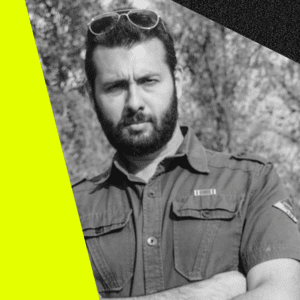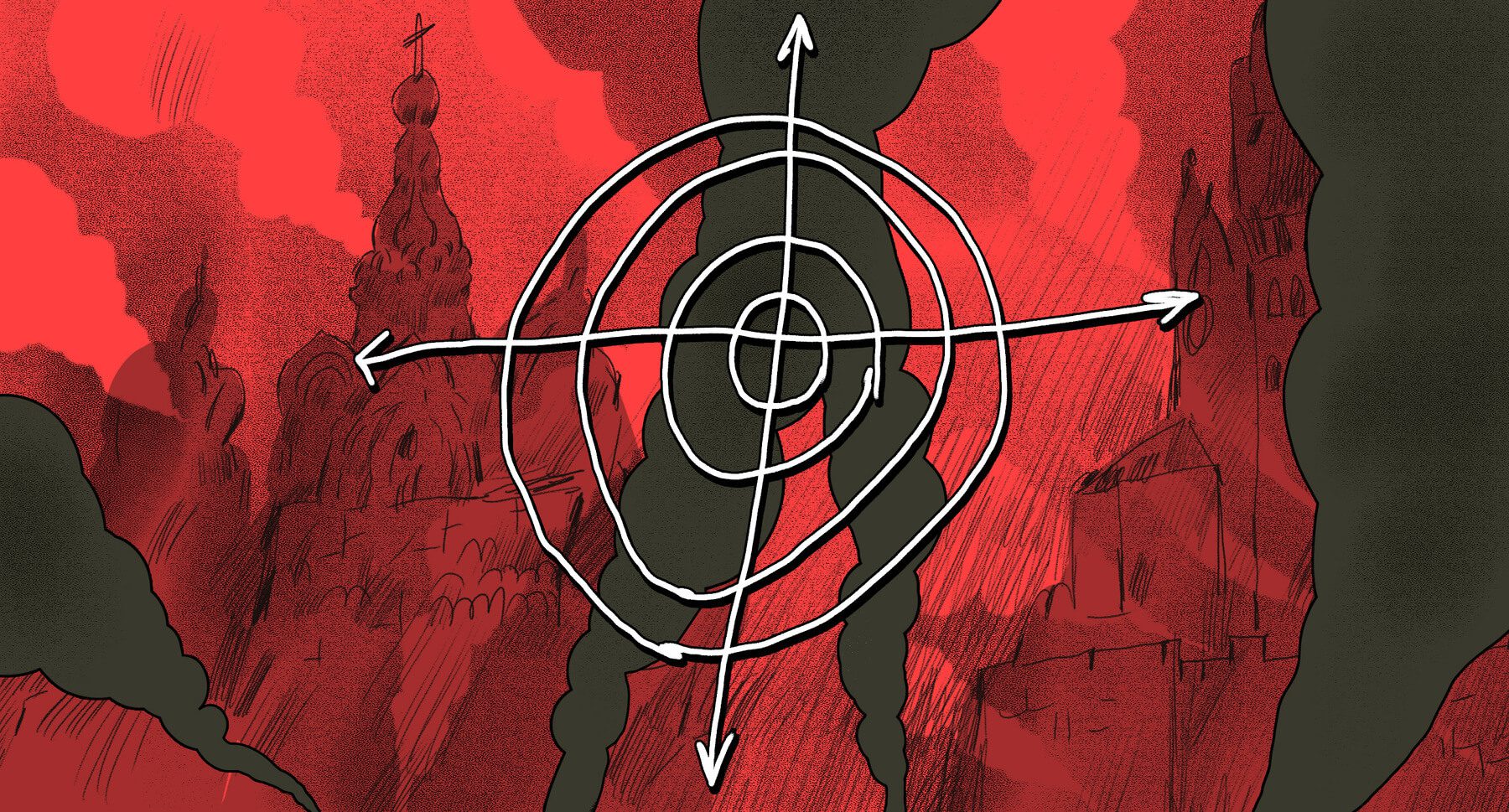In late 2023 and early 2024, the number of reports of explosions in the Belgorod region of the Russian Federation bordering Ukraine increased significantly. The exact cause of the blasts and the type of weapon used in the attacks are not yet known for certain. One of the possible reasons is the work of Russian air defense against Ukrainian missiles, as a result of which debris fell in the regional center.
The aggravation in the Belgorod sector has raised the issue of moving hostilities to the Russian Federation’s territory. Zaborona, together with experts, tried to consider how likely this scenario was and what it could bring to the Ukrainian Armed Forces.
Transfer of hostilities to the territory of the Russian Federation: feasibility from a military point of view
For almost two years, the Armed Forces of Ukraine have been heroically holding back the pressure of the occupying forces and even conducting their own counterattacks to liberate Ukrainian lands. However, the last few months have shown that due to the saturation of the occupation forces’ defense lines at the front, it has become difficult for the Defense Forces to move.
At the same time, Russian troops are erasing Ukrainian towns and villages one by one on the occupied land. This state of affairs suits the Kremlin, as the war is going on exclusively on foreign territory. And it cannot suit Ukraine at all, because currently, only the population of Ukraine is suffering from the war, which allows the Russian leadership to take its time with the curtailment of hostilities.

Senior Lieutenant of the Israeli Defense Forces and military expert Yigal Levin believes that the shifting of hostilities to the territory of the Russian Federation is an important component of the success of the Armed Forces in this war.
“According to the theory of warfare, one should move the war to the enemy’s territory as soon as the opportunity arises. And if there is no such opportunity, you need to look for it as soon as possible. The main thing is not to let the enemy isolate the war on your territory,” the expert says.
Yigal notes that the current scenario may suit Russia, as Russian cities are relatively safe and the population does not feel much discomfort. However, accepting such conditions would mean playing by Russia’s rules, which is absolutely not beneficial for Ukraine.
“The culmination of the aggressor’s desire is to capture your country. That is, the Soviet Union’s attack on Finland, Egypt’s attack on Israel, and Russia’s current invasion of Ukraine all share the same goal. The attacker has created the rules of the game, and you have to quickly break them and look for ways to bring the war to his territory,” Levin adds.
The Israeli military also notes that the transfer of hostilities to the enemy’s territory is not something surprising or unexpected. On the contrary, such a development is the most obvious and logical: “You need to understand that moving the war to the enemy’s territory is not some kind of know-how or my special opinion. It is an axiom, it is a base. If you start studying military science, you will learn the most fundamental rule — the need to move combat operations to the enemy’s territory. It’s not a miracle, it’s the primer of military thought and strategy.”

Illustration: Kateryna Kruhlyk / Zaborona
Moving the war out of Ukraine in 2024: the reality of the scenario
It is currently difficult to predict whether the Ukrainian Armed Forces will actually be able — and willing to enter Russian territory in 2024. Such a prediction can only be made if we have a good understanding of the scale of forces and means available to the AFU and the occupation forces. However, we notice that every month the Armed Forces continue to erase the “red lines” previously drawn by the Kremlin.
Strikes on military targets in Crimea are now taking place regularly, although previously, only for attempts to carry out such strikes, Russia threatened a “nuclear response”. Now, strikes on the Belgorod region are slowly becoming commonplace, whereas once it was hard to imagine. Moreover, the Ukrainian military has begun to recognize the fact that it is entering Russian territory and conducting military operations there, as was the case with the entry of a GUR (Main Directorate of Intelligence) unit into the Belgorod region in December 2023.
“Today we see Ukraine striking at the Belgorod region. And remember how it was before. When the Russian Volunteer Corps entered the region in the spring, Ukraine immediately said that it was not the Ukrainian Armed Forces, but only Russian partisans. Now, the GUR calmly states that a few days ago they entered the Belgorod region, laid mines there, and so on. That is, the discourse is changing, and this is good. Such statements and actions indicate that Ukraine is a sovereign state and decides for itself where and how to conduct hostilities,” believes Yigal Levin.

Another Israeli military expert, David Gendelman, believes that despite the intensification of hostilities in the Belgorod region, the chances of seeing large-scale ground operations of the Armed Forces of Ukraine in Russia in 2024 are low.
“A significant shifting of hostilities to the territory of the Russian Federation is unlikely for both political and military reasons. The maximum that can be expected is the continuation of artillery and missile attacks and UAV raids, as well as small raids like those conducted by the Russian Volunteer Corps in 2023,” the expert believes.
What will the Ukrainian Armed Forces gain from transferring hostilities to the territory of Russia?
The outbreak of hostilities in the Russian Federation will have two components of a positive impact on the war for Ukraine. First, such a development could lead to the growth of protest moods within the aggressor country due to the need to continue fighting. It’s one thing when the war is happening exclusively on TV screens, but it’s quite another when your city is turning into ruins as a result of this war. It is hard to say that Russians will start protesting. The two years of the big war have proven the deep indifference of the Russian population and its ability to tolerate any actions of the authorities.
However, there is another aspect of the issue — a practical one, and one that relates exclusively to the Armed Forces and their capabilities. It is not known for certain how many troops are currently deployed in the territory of the Russian Federation adjacent to Ukraine from the north. But if we think logically, today the majority of the Russian army should be deployed in the south and east of Ukraine.
“We understand that they have much fewer forces there. There are conscripts, all kinds of FSB units, the National Guard, some Territorial Defense, etc. But it’s obvious that this hodgepodge is weaker than, for example, their forces in the South,” notes military expert Igal Levin.
In this regard, the potential entry of the Armed Forces of Ukraine into the territory of the same Belgorod region will force the top leadership of the Russian Federation to withdraw its units from the occupied territories of Ukraine and move them to its own borders. This could potentially improve the situation of the Ukrainian Armed Forces in the South and East of Ukraine.
“This is not the only way to win the war, but it is part of the strategy. Their troops are deployed in specific areas: Zaporizhzhia direction, Donbas, Kharkiv direction… And then imagine that they need to keep troops in the border areas as well. Not just some separate units, but full-fledged troops. This will weaken their positions in the occupied territories,” Levin adds.

Illustration: Kateryna Kruhlyk / Zaborona
The possible reaction of Western allies
One of the factors holding back the Ukrainian Armed Forces from conducting a ground operation in Russia is a possible negative reaction from our Western allies and even the termination of military assistance to Ukraine. Indeed, they have expressed concern several times after Ukraine launched strikes on Russian territory. In particular, in the spring of 2023, U.S. officials said that they generally did not support Ukraine’s strikes inside Russia. It was also said that the United States did not want Ukraine to use American weapons for such strikes. However, as Yigal Levin notes, there is no direct ban on Ukraine’s strikes on Russian territory, as no one has ever publicly said that they do not allow Ukraine to carry them out.
“No Western politician has ever said that. It was a misrepresentation made by journalists. Moreover, officials said that Ukraine decides where and how to strike. Yes, the Americans said: we do not approve of this and that. But “we do not approve” does not mean “we do not allow”. “We do not approve” means “we are not satisfied, but the decision is up to Ukraine,” which they always emphasize,” he notes.
According to the expert, Ukraine itself must decide how to conduct combat operations to provide its army with the best conditions to win the war. Levin cites Ukraine’s actions in the Black Sea as an example, where the grain corridor was partially unblocked by its own forces, means, and on its own initiative, and significant strikes on military infrastructure in the occupied Crimea are constantly taking place (in particular, with Western missiles: Storm Shadow / SCALP).
Summarizing, the Israeli expert notes that Ukraine and its leadership should first of all think about themselves, not about what their allies will say: “The international reaction may vary. In general, the international community is on Ukraine’s side, but even if we assume that its reaction will be negative and there will be condemnation, it is best to quote Israeli Prime Minister Golda Meir: “It is better to be alive and receive notes of protest than to be dead and receive condolences.”







